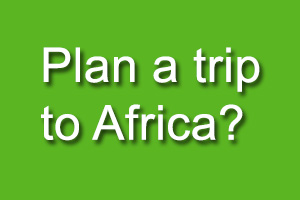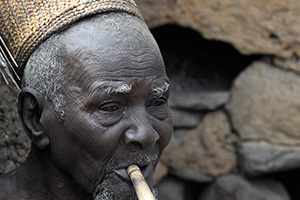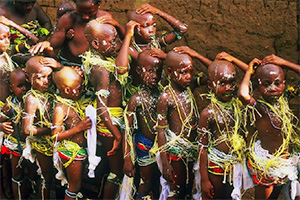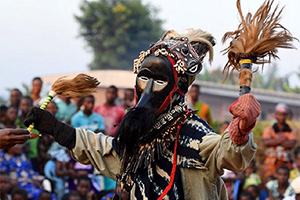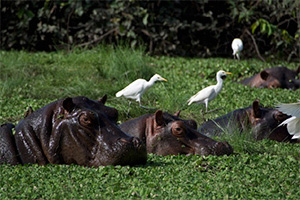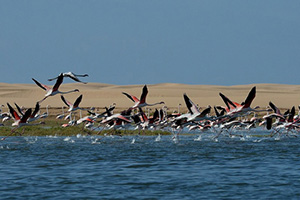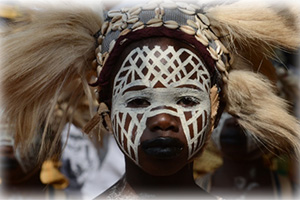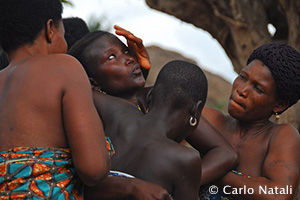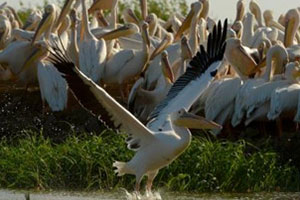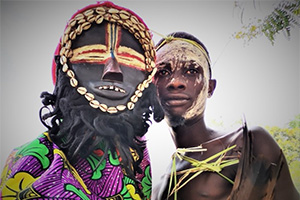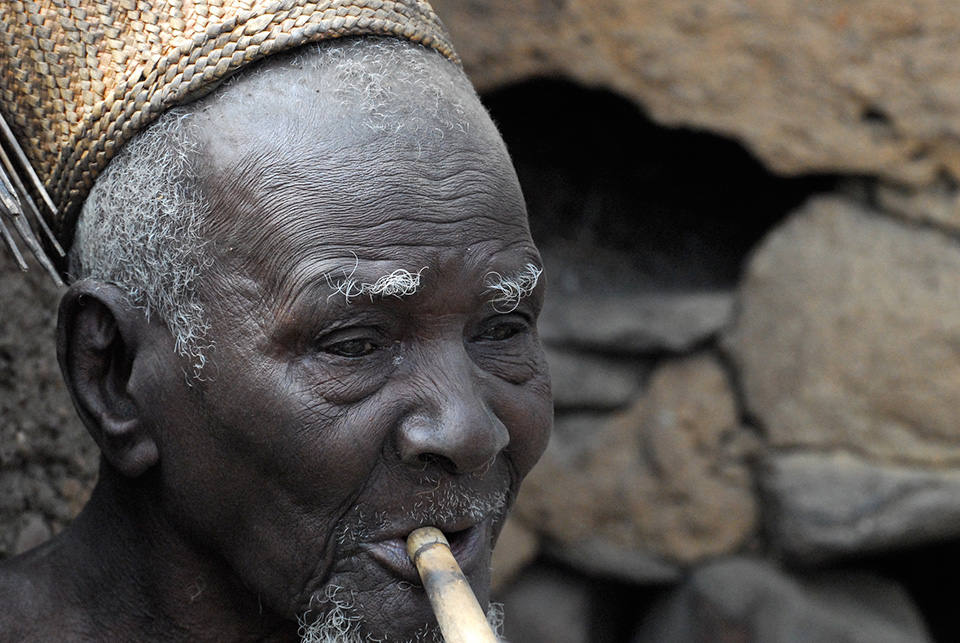
West Africa Attractions & Festivals
Akwasidae Festival (Ghana)
In the Ashanti calendar certain days each year are set aside for a very special celebration at the Royal Palace in Kumasi and this traditional ceremony takes place in one of the last African Kingdoms which has maintained its ancient rituals still alive.
During this celebration, the King sits under a spectacular colorful umbrella, is adorned in vivid cloth and massive centuries old jewelry (Ashanti gold jewelry and masks are considered masterpieces of African art) and is surrounded by the Ashanti elders and advisors, all under the authority of the Royal Speaker who holds in his hands the symbols of power. In front of the King a narrow passage of dignitaries is also formed, representing all roles and positions of power within the kingdom: sword and knife bearers, armed guards, carriers of beautiful ostrich feathers fans etc. The ceremony is then made up of a procession of royal court attendants bringing gifts, storytellers reciting the history of the Ashanti Kings, drummers & trumpeters playing horns of ivory. Corpulent dancers dressed in vivid red costumes perform an erotic dance. The mother queen also joins the ceremony accompanied by her attendants. We will witness and experience the splendor, the flavor and the atmosphere of one of last great African monarchs of the forests.
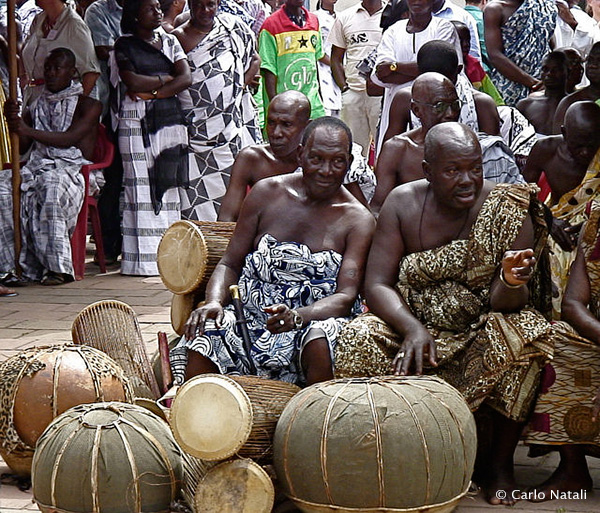
Carnival in Guinea Bissau
The carnival in Guinea Bissau is a large mix of Afro - Portuguese traditions and it is the most widely celebrated feast throughout the country. It is held in February - March and lasts for several days.
In Bissau along the main street “Amilcar Cabral Avenue”, the masks that come from all regions of the country and the “Barium” (neighborhoods of the capital) begin the parade.
Tam-tam, traditional masks, warriors armed with arrows and covered in crocodile skins, wonderful young girls who boast beautiful headdresses and that parade wearing only pearls; and contemporary paper mache masks give testimony of the incredible imagination and creativity of the native peoples.
Hours of parading make this carnival an unforgettable “festivity”, where the Portuguese influence is synchronized with the joy of living and African magic.
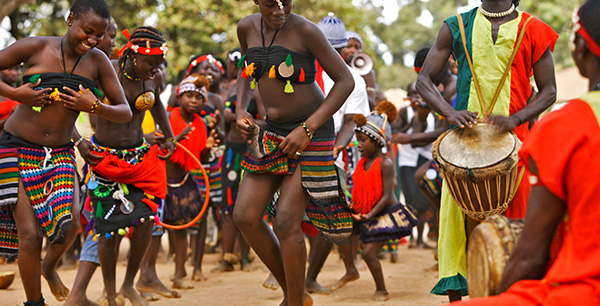
Millet Festival, harvest celebration in Krobo land
The Millet Festival is a harvest ceremony sprinkled with a profusion of colours and beautiful jewels. Traditional chiefs come dressed in their best outfits and are surrounded by a particularly enthusiastic crowd. Escorted by their entire court, they parade to the rhythms of the drums. This festival will be highly appreciated by those who are passionate about glass beads as the Krobo themselves make them and are so proud to show them during the festival.
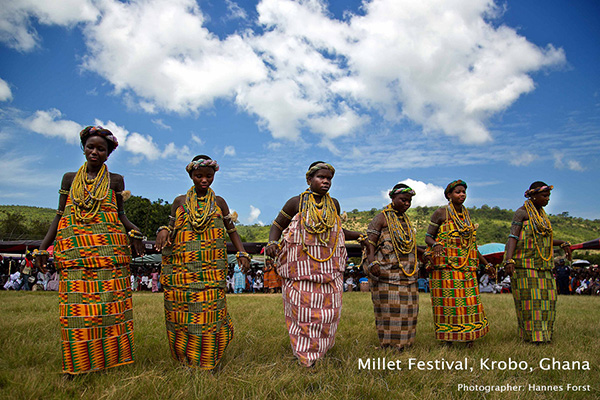
Voodoo (Benin and Togo)
All along the coast of Togo and Benin, voodoo is a religion that has been passed on by the ancestors and is still fervently practiced. Although for many Europeans voodoo is only a vulgar form of black magic, in truth voodoo is a true religion, far richer and more complex than people often think. In a remote hidden village we will join a Voodoo ceremony: the frenetic rhythm of the drums and chants of the adepts help calling in the voodoo spirit who then takes possession of some of the dancers. They fall into a deep trance: eyes rolling back, grimaces, convulsions, insensitivity to fire or pain. Sakpata, Heviesso, Mami Water are just some of the voodoos divinities who can show up. In this narrow village, surrounded by the magic atmosphere of the ceremony, we will finally understand what people mean when they say: “In your Churches you pray God; in our voodoo shrine we become God!”
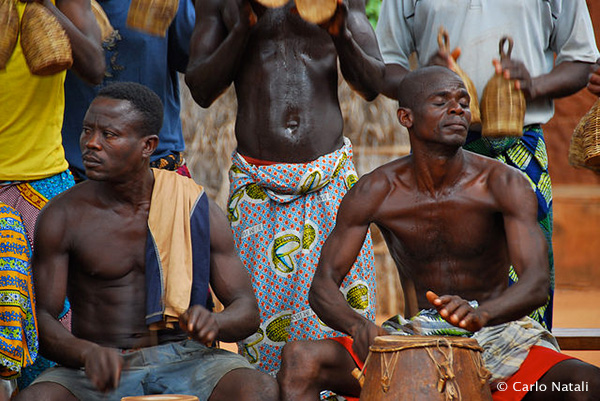
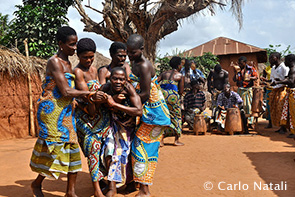
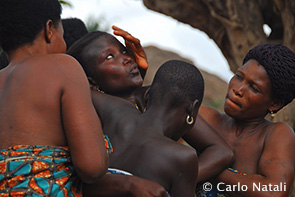
Egun Mask Dance (Benin)
The Egungun is a very powerful masks secret society. Egun masks are the reincarnation of deceased people and are known and feared for their aggressiveness and their unpredictable way of moving around. Intensively coloured, masks are covered with a multitude of pieces of cloth of many red shades.
They emerge from the forest and form a procession through the streets of the village, leaping towards any foolish spectator who dares getting too close. And nobody wants to be touched by the Egun because any contact carries the danger of death. Better watch out! When masks arrive they perform a kind of bull fight designed to scare the crowd but in truth they are actually greeted with bursts of laughter!
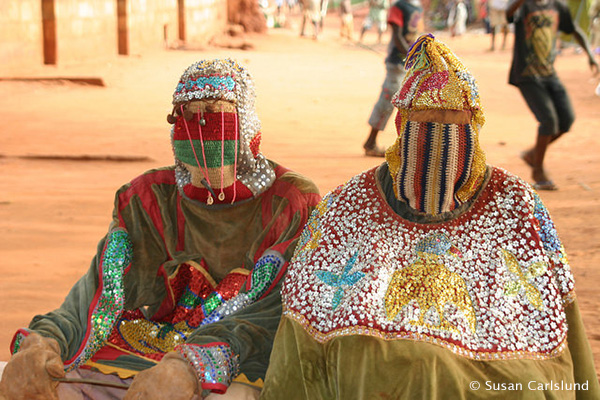
Gelede Mask Dance (Benin)
Gelede is at the same time a cult, a secret society and a mask. First of all it is the cult of Oudua: the great divinity, the old mother and the mother earth. Gelede is also the daughter of Ougun, the god of iron and one of the main gods in South Benin’s Voodoo religion. But Gelede is also the secret society which holds the Gelede masks and organizes special dances. Gelede performances recall our western “theatre” where each mask represents a character, often humoristic or ironic. This theatrical aspect of the masks mimicking short stories has the function of educating, not simply entertaining the village. Gelede mask has feminine features but is worn by men dressed up like women and dancing incredible performances: a chorus made up of more than 20 singers dancing in a large circle with two big drums in the middle, the surrounding public, happy and excited, singing along, laughing and clapping hands. Colours dominate the scene with the dancers dressed up in colorful clothes moving around all the time. Indeed a fascinating mix of street theatre and magical theatre.
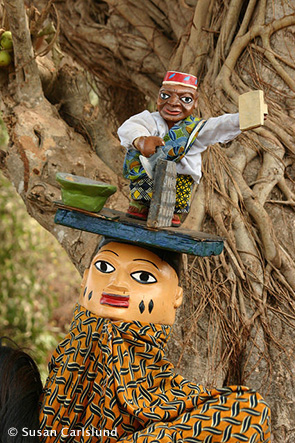
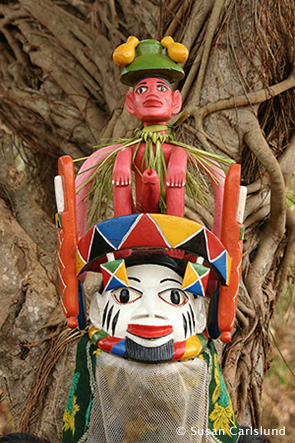
Elmina (Ghana)
Elmina is a name linked to the history of Africa and to general world history. In 1482 Christopher Columbus and Bartolomeu Diaz arrived here with ten caravels to build a castle under Portuguese authority, the place having been chosen following the discovery of gold mines in the area. This is how the story of Elmina started: a castle, a port, a village - all in contact with Europe for more than five centuries. The Castle, the oldest European building in Africa, at different times has been used as a warehouse to trade gold, ivory, and eventually slaves. What we visit today is the result of successive extension works and is recognized as a UNESCO World Heritage site. The old Dutch Cemetery in Elmina goes back to 1806. Outside the castle, a wonderful fishing village with lots of large colorful fishing boats - every day these canoes are guided by skilled fishermen across strong ocean waves and currents, “fighting” to earn a living. In the old town we will see the Posuban, the shrines of the old “Asafo companies” - the warriors who used to put their offerings on the large colorful statues. The alleys in the old town have a very lively atmosphere, bringing us back to a time when Elmina was a busy colonial town.
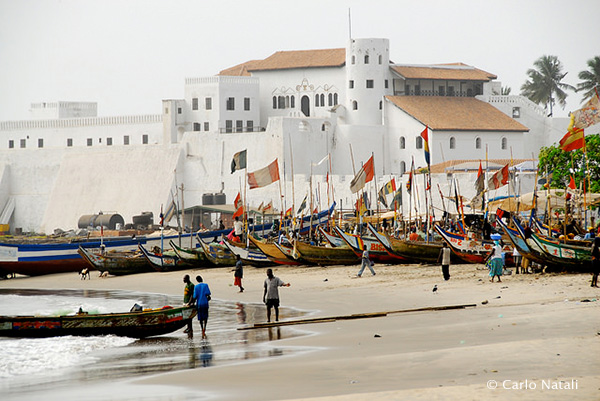
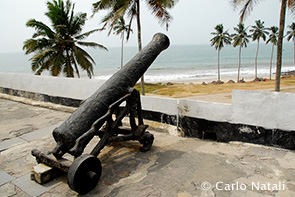
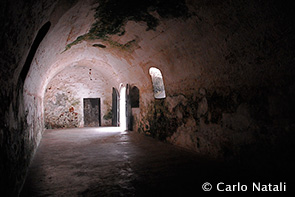
Ganvie (Benin)
We cross the Lake Nokwe with a motorized boat to reach Ganvie, the largest and most beautiful African stilt village. The approximately 25,000 inhabitants, of the Tofinou ethnic group, build their huts on teak stilts and cover the roofs with a thick layer of leaves. Fishing is their main activity. The village has managed to preserve its traditions and environment despite the long-lasting human presence in a closed setting; and the lake is not overfished. Life unfolds each day around the canoes that men, women and children guide with ease using brightly colored poles. It is with these canoes that men fish, women deliver goods to the market and children go to school and play.
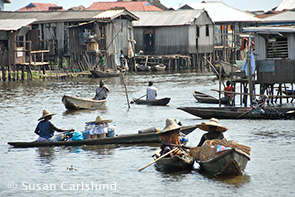
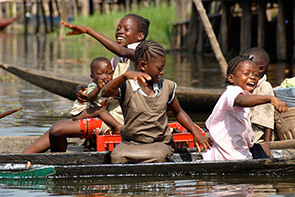
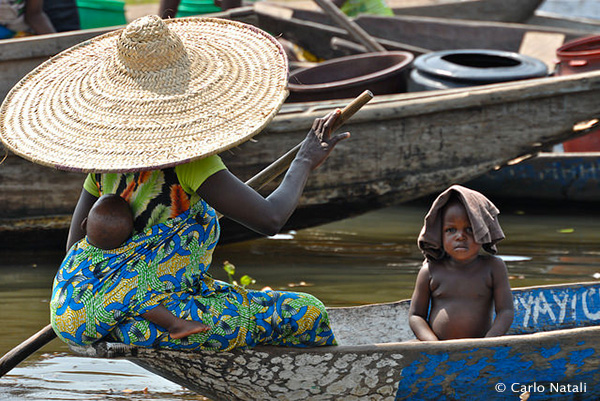
Accra (Ghana)
Accra, the capital of Ghana, has maintained its unique identity despite the fast paced development currently underway in this intriguing African city. The luxuriant administrative area, punctuated with elegant villas built during the first half of the 19th century, reminds us that Ghana was one of the most flourishing British colonies in West Africa.

